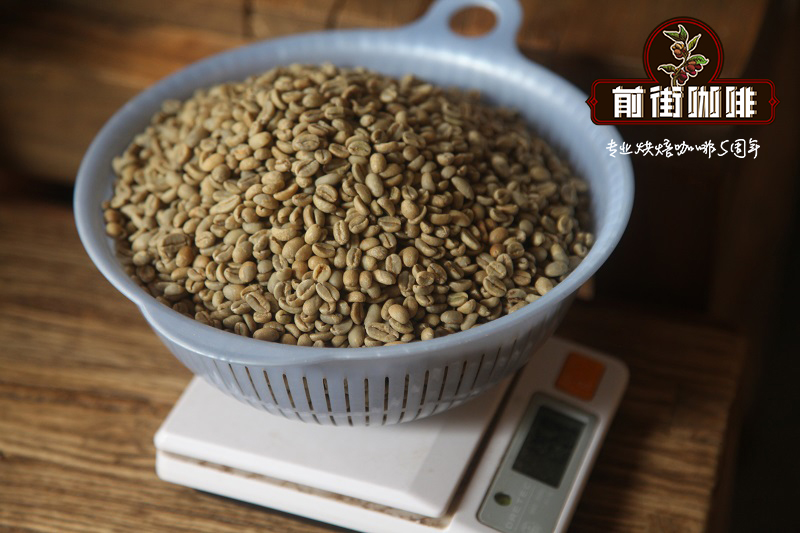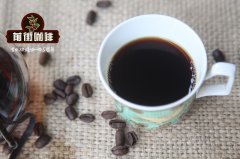Kenya Coffee Flavor and Taste introduction to the varieties of African and Kenyan coffee beans

In less than a century Kenya has become home to no fewer than four new varieties. First, Scott Laboratories identified the famous SL-28 and SL-34 of the 1930s. They combine amazing flavor and drought resistance. The perfect coffee factory? You might think so if it weren't for their susceptibility to coffee berry disease (CBD) and leaf rust (aka la roya). CBD can cause up to 60 percent of harvest losses, according to a study published in 2008 in the journal Plant Pathology of the American Society for Plant Pathology. The fungus, which produces spores that attack green cherries, was first discovered in Kenya in 1922. It mainly affects coffee cultivation in Africa. In the 1970s, Ruiru Station began experimenting with breeding different CBD and rust resistant varieties. The result was Ruiru11, released in the 1980s. High yield, and indeed CBD and rust-proof properties, this seems to be the solution to all of Kenya's coffee problems-except for the contour of the cup. SL-28 and SL-34 strains were added to the original mixture of Hibrido de Timor and Rume Sudan, the former being an Araba-Robosta hybrid. Adding SL certainly improves the taste, but Ruiru 11 still doesn't get to SL's dizzying heights. Despite this, coffee is highly productive, resistant to disease, and in good shape. For many people, this is enough. Coffee Research Institute (CRI) launched Batian on September 8, 2010, the latest variety available in Kenya. This was the culmination of further experiments based on lessons learned from Rui Ru 11. Genetically, it was selected from the backcross of SL-28 and 34, and is closer to SL-28 than Ruiru 11. This eliminates the problematic Robusta element, thereby improving the quality of the cup. Interestingly, Batian seems to be better than SL cupping. However, there may be other factors at play here-such as the low-quality example of SL-28 and 34 used in comparing cupping-but the results are noteworthy. As for CBD and coffee leaf rust, initial reports indicate good resistance-high yield per plant. Natural rust and CBD resistant varieties not only mean higher yields. It also means less demand for pesticides, which makes crops more attractive to buyers and reduces costs. Farmers do indeed attach great importance to prevention, given the potentially disastrous effects of disease on their crops and incomes. A large number of chemicals are used to offset the chance of infection, which not only has serious ecological consequences, but is also an expensive investment. CRI Director Dr. Elijah Gichuru told Daily Nation that reducing Batian's chemical usage could reduce overall production costs by up to 30 percent. This will greatly increase farmers 'profit margins and, combined with Batian's reputation for cupping, paint an optimistic picture of the future financial and ecological success of Kenya's coffee growing industry. There is one major problem with the current state of Batian in the industry: it is almost impossible to find it alone. Nguzo Africa, in partnership with the Coffee Institute, provided farms with more than 100,000 seedlings in 2015, so that may soon change. But, at the moment, Batian is almost always mixed up with SL and Ruiru 11. Ivica Cvetanovski discusses this in a 2015 blog post on the Rubens Gardenelli website. He was unable to find Batans who dealt independently, he said: "The main reason is that many farmers are small farmers with few trees and focus on picking and generating income for their families." Wet stations are not encouraged to handle small quantities, single varieties and microfields that we already know about." This makes it difficult for us to purchase single variety lots. This, in turn, affects both our ability to grow crops accurately-and thus determine their quality-and makes crops drinkable only as a single source. While SL's bulk crop is usually available on its own, obviously we have to wait and see. As an untested new variety, care must be taken in planting. We still need long-term research on this variety to understand its practical utility in terms of application, resistance and yield. An all-out push for large-scale cultivation would put the livelihoods of a large number of Kenyan producers at risk.
Important Notice :
前街咖啡 FrontStreet Coffee has moved to new addredd:
FrontStreet Coffee Address: 315,Donghua East Road,GuangZhou
Tel:020 38364473
- Prev

What is the difference between fine coffee and commercial coffee? what are the standards of fine coffee? what are the characteristics?
What makes boutique coffee so special? We know its quality is much better than commercial grade beans, but why? It was picked from the tree. Is the tree full of the unique and delicious features we like? If only it were that easy! The production of high-quality micro-batch boutique coffee requires a lot of detailed work. From fertilizer to shadows, from
- Next

What is a micro-batch of coffee? must a micro-batch of fine coffee be good?
Over time, many terms have been created and modified to meet the needs and expectations of the specialty coffee industry. One of these terms is microbatches, which are used by many members of the coffee industry to refer to small, proprietary and traceable coffee. However, there is still some confusion about the exact definition of the word. In order to make micro batches valuable to everyone in the coffee supply chain
Related
- Detailed explanation of Jadeite planting Land in Panamanian Jadeite Manor introduction to the grading system of Jadeite competitive bidding, Red bid, Green bid and Rose Summer
- Story of Coffee planting in Brenka region of Costa Rica Stonehenge Manor anaerobic heavy honey treatment of flavor mouth
- What's on the barrel of Blue Mountain Coffee beans?
- Can American coffee also pull flowers? How to use hot American style to pull out a good-looking pattern?
- Can you make a cold extract with coffee beans? What is the right proportion for cold-extracted coffee formula?
- Indonesian PWN Gold Mandrine Coffee Origin Features Flavor How to Chong? Mandolin coffee is American.
- A brief introduction to the flavor characteristics of Brazilian yellow bourbon coffee beans
- What is the effect of different water quality on the flavor of cold-extracted coffee? What kind of water is best for brewing coffee?
- Why do you think of Rose Summer whenever you mention Panamanian coffee?
- Introduction to the characteristics of authentic blue mountain coffee bean producing areas? What is the CIB Coffee Authority in Jamaica?

